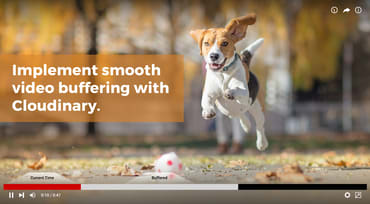Videos in web sites and apps are starting to catch up with images in terms of popularity and they are a constantly growing part of the media strategy for most organizations. This means bigger challenges for developers who need to handle these videos in their web sites and mobile apps. Cloudinary's mission is to solve all developer needs around image and video content management. In this blog post, we are excited to introduce Cloudinary's complete cloud-based video content management solution for developers.


Video is an increasingly important component for websites - whether it’s to inform visitors, enhance user experience or support sales and marketing efforts. But delivering high-quality video at large scale can be quite a challenge. You need to consider encoding, format, bandwidth usage, delivery and the devices on which visitors may be watching the video, to name just a few concerns.

Like it or not, visuals tell better stories than words. But using images and videos on a website presents challenges. This article is a follow-up to Website Image Performance Improvement, in which we discussed how to upload, store, manipulate, optimize and deliver images, efficiently and effectively. Now, let's talk video.

This article was originally posted on Scotch.io
In the early days of the web, the only thing that mattered was getting that content out to users no matter how long it took or what resources it consumed. As a matter of fact, users seemed to understand and were ready to wait till whenever their browser's loading spinner stops and the contents displayed.

The night was moist. Angular2 had just been released and developers all over the world were asking for an integrated image management solution.
Cloudinary heeded the call and is proud to present the new Angular2 SDK, providing directives for displaying and transforming images and video with an API.


High resolution images and videos

Once upon a time, in long forgotten browser versions, getting a video into a website required creating and embedding Flash resources. But these days, all modern browsers support HTML5, including the HTML5 video tag, which means you’ve got a built-in video player that anyone can use.
